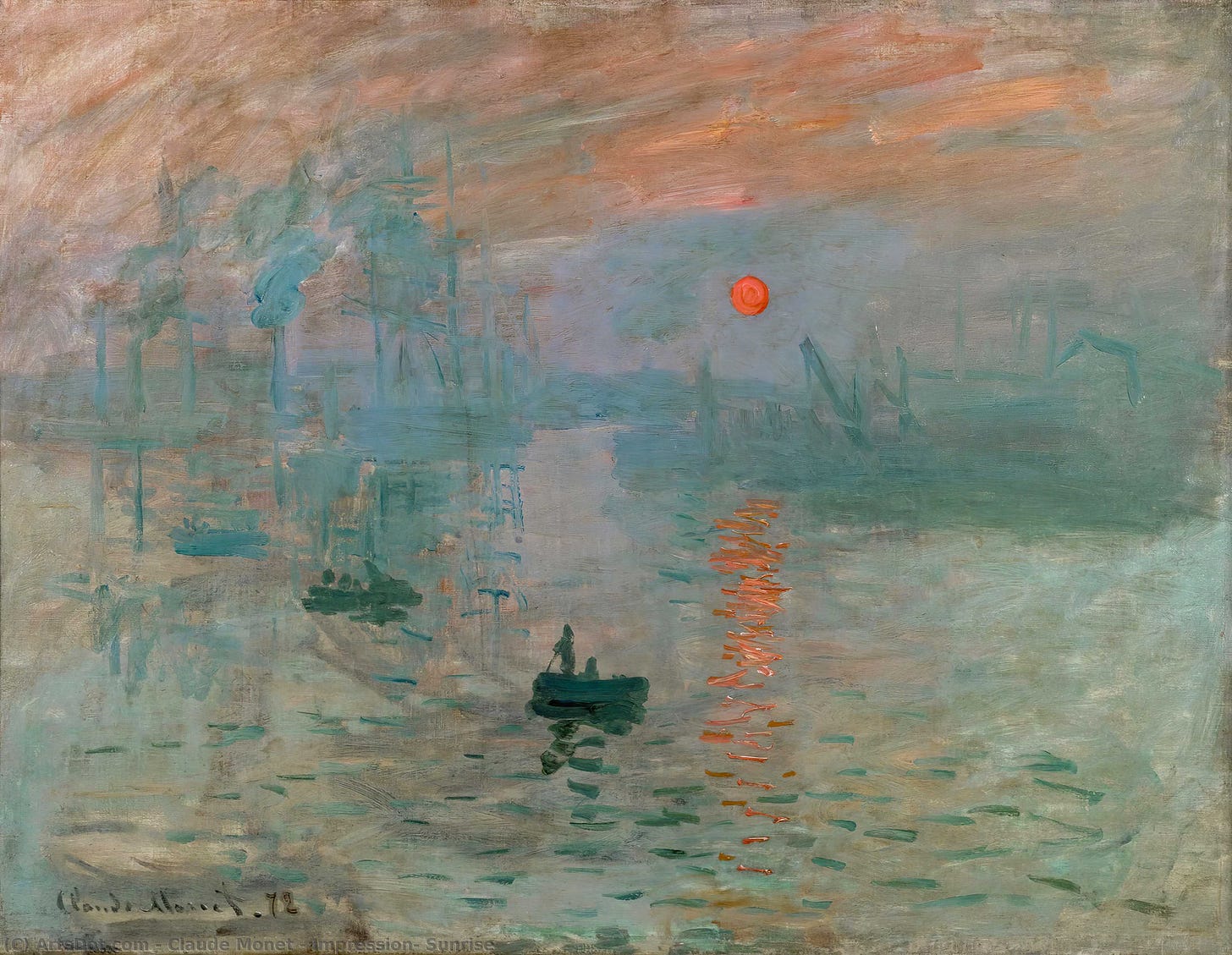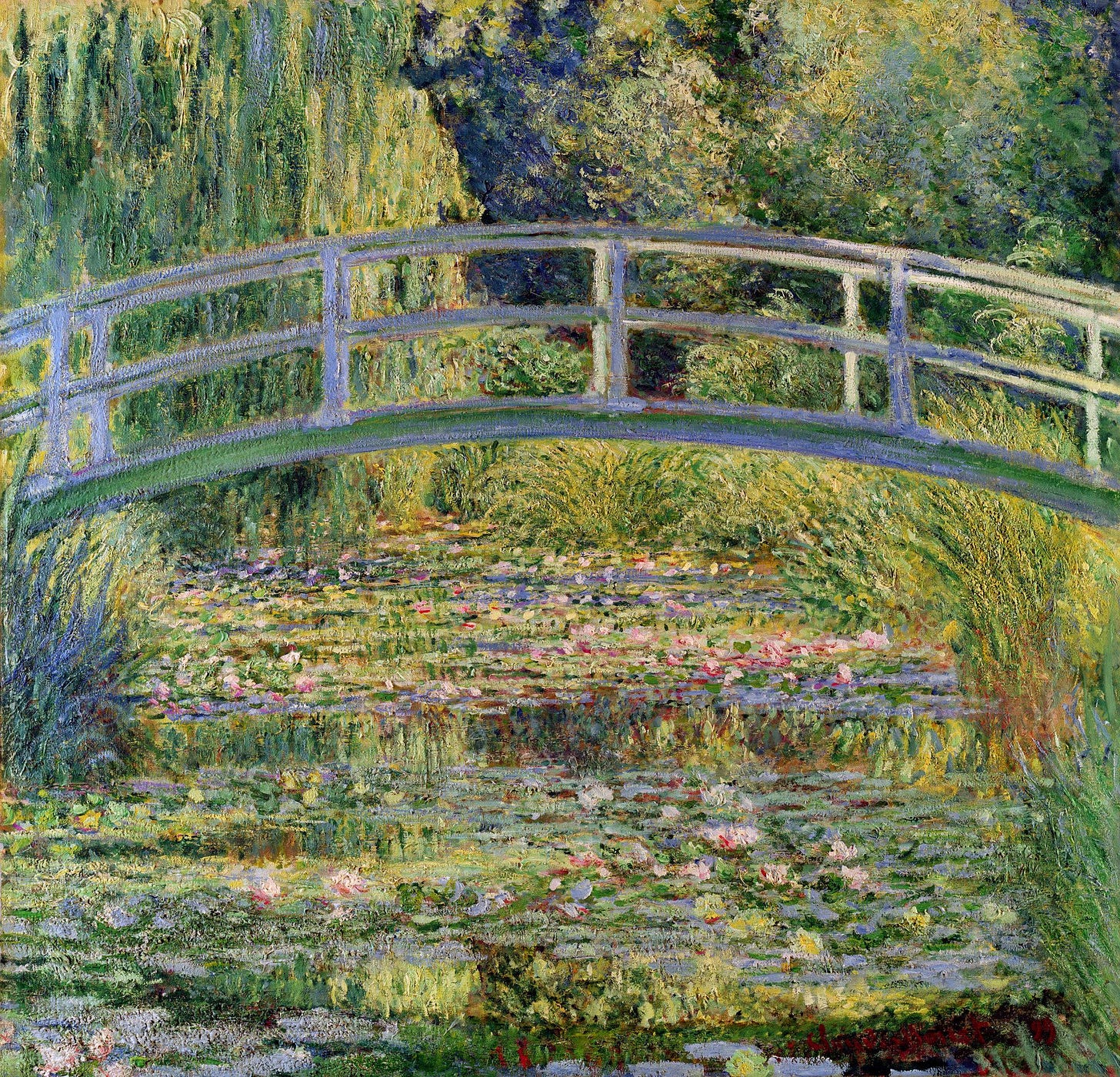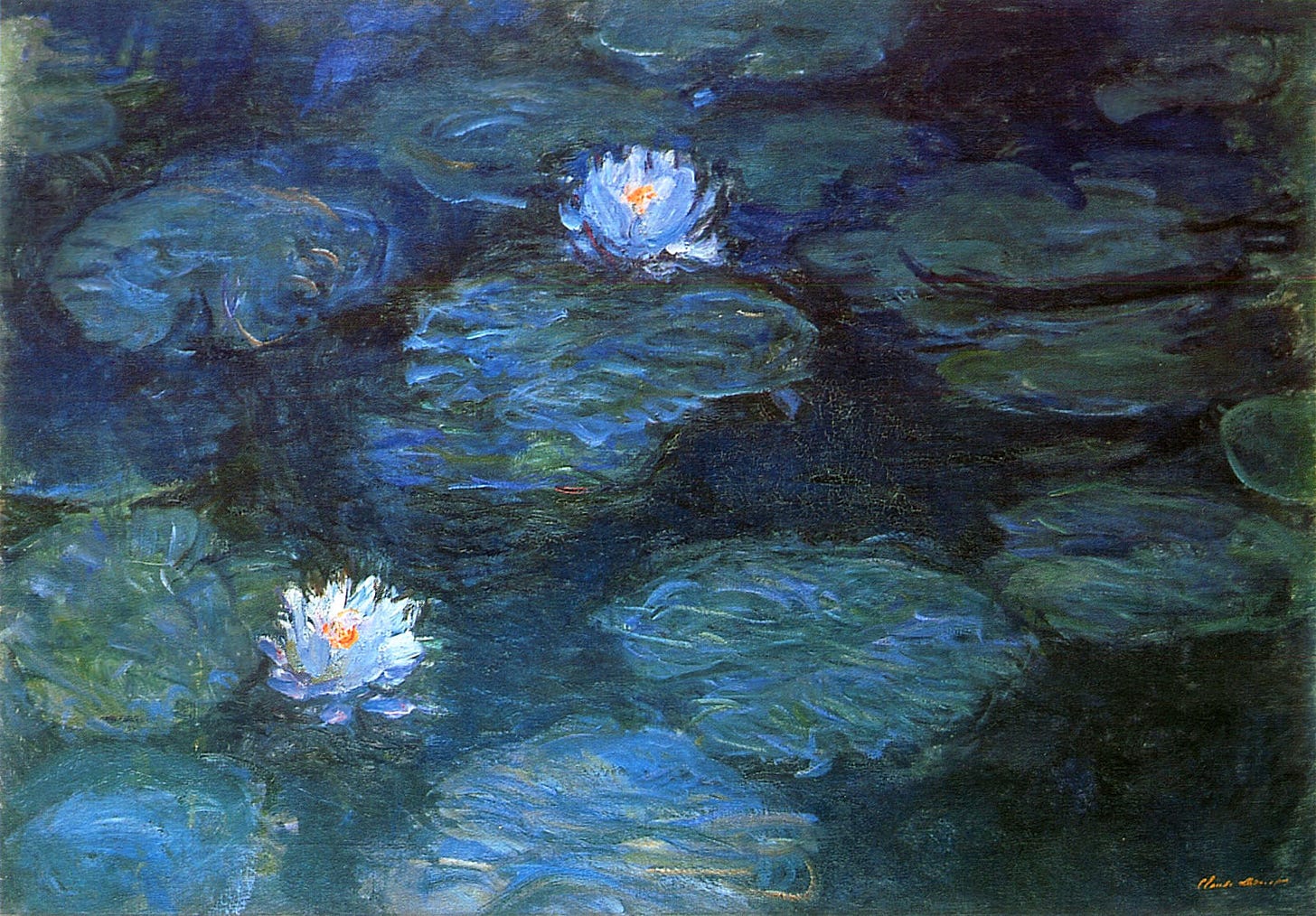Impression Sunrise, Claude Monet, 1873
Rejected from the ‘proper’ salon, Claude Monet, Pierre Auguste Renoir, and Edgar Degas organized their own show in 1874.
Art critic Louis Leroy saw the show. Let’s just say he was “less than impressed.” Hold that thought! In any case, he had a particular reaction to Claude Monet’s Impression Sunrise. He condemned the painting, saying it was “nothing more than a sketch.”
Yes, it broke from the traditions of painting, but Leroy failed to see the wonder of the capture of light and fleeting moments. He called the entire show “The Exhibition of the Impressionists,” and though it was a soundly delivered slur, the artists embraced it. It became the name of their movement!
Frederic Edwin Church, The Andes of Ecuador — a study of light, smoothly executed in the studio. He took a year to paint a work like this.
Claude Monet, Japanese Bridge
Claude Monet, Waterlilies
With their deliberate brushstrokes and application of complimentary colour, the ‘impressionists’ explored the transitory nature of light as the hour changed.
They explored how the eye sees that light as well. In the end, they added to the toolbox of the painters who followed them.
They moved from the very formal classical style (usually executed in the studio from sketches) to painting en plain air (outdoors, on site).
Late in life, Claude Monet painted his water lilies. Looking at the body of work, he has not discarded the use of foreground, composition, and aerial perspective. Rather, he has brought the viewer closer in to the wonder of his paintings.






